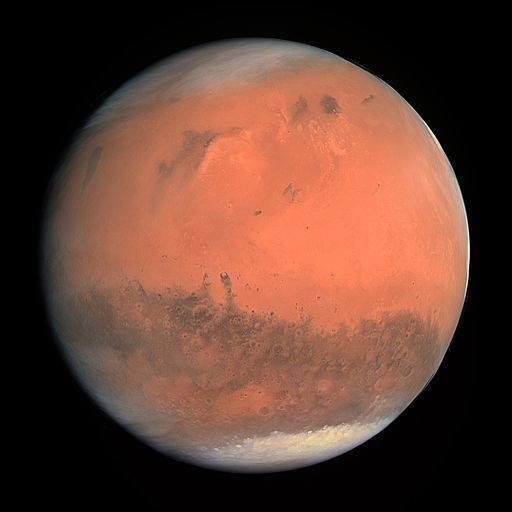
By Heather Hamilton, contributing writer
Elon Musk thinks that we’ll have a city on Mars within 50 years — and he’s got a plan for it. In a commentary for New Space, the SpaceX founder warned that humans should be preparing to venture from Earth to avoid extinction in the case of a doomsday event. He thinks that a fully formed Mars colony, including “iron foundries and pizza joints,” can be accomplished this century.
The first flights to Mars could take place around 2022, meaning a city could potentially be in place by 2062. Musk hopes to build a “Mars Colonial Fleet” with more than a thousand cargo ships able to transport 200 passengers at a time. The fleet could also transport materials to build homes, factories, and even shops. He expects that it will take between 40 and 100 years to transport enough people to populate a full city.
Musk believes that there are two paths available to humankind: Remain earthbound and face eventual extinction, or “become a space-faring civilization and multi-planetary species.” He says that the population threshold for a self-sustaining city is a million people, which he predicts can be accomplished in 10,000 trips.
Given the length of the journey, the ships that transport the Mars colonists will have to be “really fun and exciting [and] cannot feel cramped or boring,” writes Musk. He advocates for zero-gravity games and describes an environment that includes movies, lecture halls, cabins, and restaurants, promising that travelers will have “a great time.” He envisions flybys of Jupiter and, with the establishment of refueling stations on planetary moons such as Jupiter’s Europa, the ability to fly between Mars and other planets in the solar system.
Others have proposed colonizing Earth’s moon for similar reasons, but Musk believes that Mars is the better option because it is larger, has a day that is just 30 minutes longer than Earth’s, receives sufficient sunlight, and has an atmosphere that can be compressed to support plant life. “It would be quite fun to be on Mars because you would have gravity that is about 37% of that of Earth, so you would be able to lift heavy things and bound around,” writes Musk.
Right now, it would cost about $10 billion to send a single person to Mars, though Musk has calculated that he could bring that down to $100,000 by fueling cargo ships in space. If methane plants were built on Mars, the rockets used to transport colonists and supplies to the planet could be refueled for the trip back to Earth to avoid creating “a massive graveyard of ships” in the new colony.
The SpaceX CEO says that the primary reason for his wealth accumulation is to fund his plan to build a city on Mars. But Musk’s plan has its skeptics.
According to Tech Times, former astronaut Buzz Aldrin, the second human to walk on the moon, has criticized Musk’s plan for focusing more on transporting people to the planet than on housing them once they get there.
In an article for Slate, Andrew Coates, a professor of physics and deputy director (solar system) at the Mullard Space Science Laboratory, University College London, argues that Musk’s plan dismisses several important considerations. For one, we are still searching for evidence of other life on Mars. Proceeding with Musk’s colonization plan before we resolve that question could prove harmful to life and would violate planetary “protection rules” that are in place to guard against contamination.
Coates adds that Musk doesn’t give sufficient consideration to the surface temperatures on Mars, which can drop from 0°C during the day to −120°C at night. Musk doesn’t address how to deal with the planet’s brutal cold or how to compress its atmosphere to sustain plant growth beyond saying that it should be done.
Finally, Coates says, “There is no mention of radiation beyond Earth’s magnetic cocoon. The journey to and life on Mars would be vulnerable to potentially fatal cosmic rays from our galaxy and from solar flares. Forecasting for solar flares is in its infancy. With current shielding technology, just a round-trip manned mission to Mars would expose the astronauts to up to four times the advised career limits for astronauts of radiation. It could also harm unmanned spacecraft. Work is under way on predicting space weather and developing better shielding. This would mitigate some of the problems — but we are not there yet.”
Despite those reservations, Coates acknowledges that “aiming high usually means we will achieve something,” and Musk has certainly aimed high enough to pave the way for future exploration.
Sources: New Space,Tech Times,Slate
Image Source: Wikimedia
Advertisement
Learn more about Electronic Products Magazine





